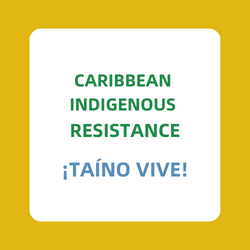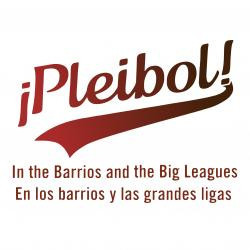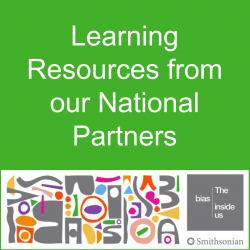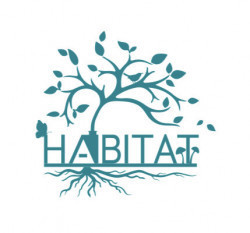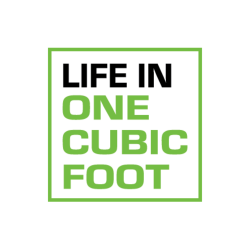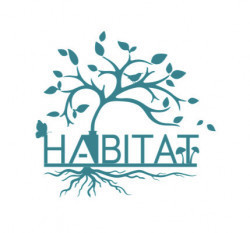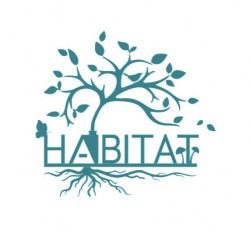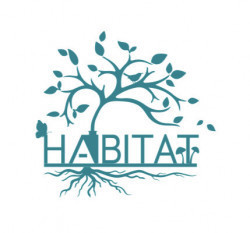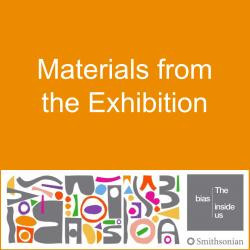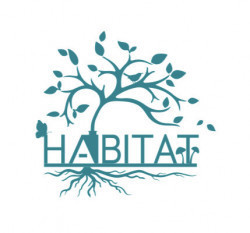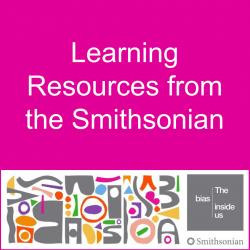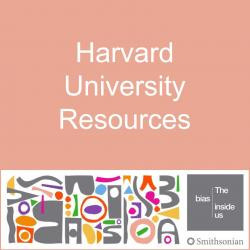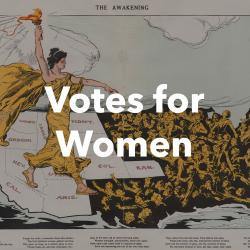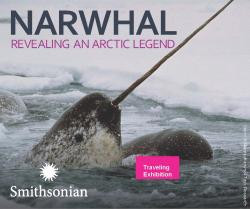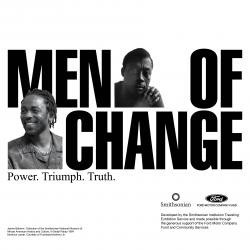Smithsonian Institution Traveling Exhibition Service
The Smithsonian Institution Traveling Exhibition Service (SITES) has been sharing the wealth of Smithsonian collections and research programs with millions of people outside Washington, D.C., for more than 65 years. SITES connects Americans to their shared cultural heritage through a wide range of exhibitions about art, science and history. For more information, including exhibition descriptions and tour schedules, visit sites.si.edu.
Smithsonian Institution Traveling Exhibition Service's collections
Dolores Huerta: Revolution in the Fields/Revolución en los Campos
<p><em>Dolores Huerta: Revolution in the Fields/Revolución en los Campos </em>shares the compelling story of legendary activist and leader Dolores Huerta (b. 1930) and the farm workers movement of the 1960s and 70s. It is a quintessentially American tale of struggle and sacrifice, of courage and victory.</p>
<p>As a complement to the exhibition, these educational resources explore Huerta's public life as an activist and co-founder of the United Farm Workers (UFW) and what led her to become a Latina civil rights icon. In her life as a communicator, organizer, lobbyist, contract negotiator, teacher and mother, Huerta's unparalleled leadership skills helped dramatically improve the lives of farm workers.</p>
<p>Users will broaden their understanding of the farm workers movement through a careful look at Dolores Huerta's significant - but often under-acknowledged - contributions. The exhibition and educational resources also explore how workers of different ethnic and racial backgrounds came together to empower the movement and how the arts played an essential role. In addition, users will come to understand Huerta's far-reaching impact and important legacy. </p>
<p>The resources in this collection include a bilingual community engagement resource to promote dialogue on issues that relate to social justice, activism, leadership, etc. A few activities that can be used in the classroom or when you visit the exhibition at your local museum. In addition, you can learn more by listening to Dolores Huerta by downloading the free downloadable App "Dolores Huerta" on <a href="https://play.google.com/store/apps/details?id=edu.si.sites.DoloresHuerta&hl=en_US">Google</a> <em>* </em>and<em> </em><a href="https://apps.apple.com/us/app/dolores-huerta/id1447280199">Apple</a>.<em> </em>Please remember that the App takes a few minutes to download.<em></em></p>
<p><em>*The Dolores Huerta app for Android in Google Play is being updated and will return shortly. Please use the Dolores Huerta app available on iOS.” </em><em>Thank you, SITES exhibition team</em></p>
<p><br>#NHD #NHD2020 #BecauseOfHerStory<br></p>
<p></p>
 Smithsonian Institution Traveling Exhibition Service
Smithsonian Institution Traveling Exhibition Service
58
Caribbean Indigenous Resistance / Resistencia indígena del Caribe ¡Taíno Vive!
<p>This is the education collection for the Taíno traveling exhibition: Caribbean Indigenous Resistance/Resistencia indígena del Caribe ¡Taíno Vive! Through the activities on this platform, students will be able to learn about the Taíno people, their origin story, their knowledge, and all that we have inherited from them. With these activities, students will also be able to identify concepts such as diaspora, cultural identity, and archaeological context.</p>
<p>In addition, students will be able to use their creativity to connect to Taíno culture, their movements, and ancestral knowledge. By expressing their own cultural identities and icons in a contemporary format students will connect to Taíno culture and knowledge that has survived through the centuries. </p>
<p></p>
 Smithsonian Institution Traveling Exhibition Service
Smithsonian Institution Traveling Exhibition Service
39
The Negro Motorist Green Book
<p>In 1936, Victor Hugo Green, a Harlem postman, began publishing a guide for African American travelers modeled after a similar publication for Jewish travelers. The <em>Green Book</em>, as it was known, was an instant success providing black travelers of the era with information on hotels, restaurants, service stations, and other facilities where they would be welcomed. In the era of Jim Crow and "sundown towns," this knowledge was not just helpful--it could be lifesaving.<br><br>The <em>Green Book</em> ceased publication in 1967, and the guidebook that for years had offered "travel without embarrassment" was lost to history. Few today remember its critical role in expanding horizons for African Americans.<br><br>The Smithsonian Institution brings this story to life with the exhibition, <em>The Negro Motorist Green Book</em>. This collection serves as a companion to the exhibit and features an immersive look at the harsh reality of travel for blacks in mid-century America and the vibrant parallel world of African American-friendly businesses that supported this travel. <br></p>
 Smithsonian Institution Traveling Exhibition Service
Smithsonian Institution Traveling Exhibition Service
72
Learning Resources from our National Partners
<p><em>The Bias Inside Us</em> has built relationships with a number of national and regional organizations whose focus centers on anti-bias education. These resources are a sample of the breadth of their work.</p>
<p>Part of SITES' community engagement project <em>The Bias Inside Us</em> featuring a traveling exhibition, the centerpiece for local programs and activities that raise awareness about the science and history of bias and what people can do about it. The project is grounded in research and teaches us that bias is inside everyone. It is part of being human.</p>
 Smithsonian Institution Traveling Exhibition Service
Smithsonian Institution Traveling Exhibition Service
39
Habitat: Healthy Habitats Need Water
<p>Habitats provide homes for all living things from the tiniest ant to the tallest tree! Use this Smithsonian Learning Lab Collection to explore the stories and science of habitats, and the plants, animals and humans that call them home. Healthy habitats fulfill four basic needs: shelter, water, food and air.</p>
<p>The exhibition <em>Habitat</em> is developed by Smithsonian Gardens and made available by the Smithsonian Institution Traveling Exhibition Service.</p>
<p>To explore what a habitat is with your young learner, click here: <a href="https://learninglab.si.edu/collections/habitat/T2nEsecDVo9wSiQz#r/">https://learninglab.si.edu/col...</a></p>
<p>For more information about healthy habitats and food, click here: <a href="https://learninglab.si.edu/collections/habitat-healthy-habitats-need-food/WJ68txwZdcCyBT1E#r/">https://learninglab.si.edu/col...</a></p>
<p>To explore healthy habitats and shelter, click here: <a href="https://learninglab.si.edu/collections/habitat-healthy-habitats-need-shelter/6vaPnL97HAyrw8Fh#r/">https://learninglab.si.edu/col...</a></p>
<p>For more information on habitats and clean air, click here <a href="https://learninglab.si.edu/collections/habitat-healthy-habitats-need-clean-air/Bcvny5wfTa0mPKLU#r/">https://learninglab.si.edu/col...</a></p>
<p>To learn about how human effect their habitat, click here: <a href="https://learninglab.si.edu/collections/habitats-and-humans/kWOYdt6aUosvjRGX#r/">https://learninglab.si.edu/col...</a></p>
 Smithsonian Institution Traveling Exhibition Service
Smithsonian Institution Traveling Exhibition Service
14
Life in One Cubic Foot
<p>Do you want to make a difference in your community? Discover the variety of plants and animals in your neighborhood on your own, with a friend, or with your family. Learn how you can support the health of your local wildlife! Let's get started!</p>
<p>This Smithsonian Learning Lab collection has 40 tiles. Use the collection to learn about biodiversity and to do a survey in your own backyard or a nearby park. Activities and resources include Harvard University’s Project Zero Thinking Routines, a treasure hunt, and the steps to conduct a biodiversity survey almost anywhere.</p>
 Smithsonian Institution Traveling Exhibition Service
Smithsonian Institution Traveling Exhibition Service
40
Habitat: Healthy Habitats Need Shelter
<p>Habitats provide homes for all living things from the tiniest ant to the tallest tree! Use this Smithsonian Learning Lab Collection to explore the stories and science of habitats, and the plants, animals and humans that call them home. Healthy habitats fulfill four basic needs: shelter, water, food and air.</p>
<p>The exhibition <em>Habitat</em> is developed by Smithsonian Gardens and made available by the Smithsonian Institution Traveling Exhibition Service.</p>
<p>To explore what a habitat is with your young learner, click here: <a href="https://learninglab.si.edu/collections/habitat/T2nEsecDVo9wSiQz#r/">https://learninglab.si.edu/col...</a></p>
<p>For more information about healthy habitats and food, click here: <a href="https://learninglab.si.edu/collections/habitat-healthy-habitats-need-food/WJ68txwZdcCyBT1E#r/">https://learninglab.si.edu/col...</a></p>
<p>To learn more about healthy habitats and water, click here: <a href="https://learninglab.si.edu/collections/habitat-healthy-habitats-need-water/lkhcMjsvU8xRIJNS#r/">https://learninglab.si.edu/col...</a></p>
<p>For more information on habitats and clean air, click here <a href="https://learninglab.si.edu/collections/habitat-healthy-habitats-need-clean-air/Bcvny5wfTa0mPKLU#r/">https://learninglab.si.edu/col...</a></p>
<p>To learn about how human effect their habitat, click here: <a href="https://learninglab.si.edu/collections/habitats-and-humans/kWOYdt6aUosvjRGX#r/">https://learninglab.si.edu/col...</a></p>
 Smithsonian Institution Traveling Exhibition Service
Smithsonian Institution Traveling Exhibition Service
18
Start Here - Learning About Implicit Bias
<p>These three webinars, created by Dr. Corey Yeager for <em>The Bias Inside U</em><em>s</em>, provide foundational learning for educators as they prepare for sharing this exhibition with their students.</p>
<p>Part of SITES' community engagement project <em>The Bias Inside Us</em> featuring a traveling exhibition, the centerpiece for local programs and activities that raise awareness about the science and history of bias and what people can do about it. The project is grounded in research and teaches us that bias is inside everyone. It is part of being human.</p>
 Smithsonian Institution Traveling Exhibition Service
Smithsonian Institution Traveling Exhibition Service
14
Exhibition Resources
<p>Did something from <em>The Bias Inside Us</em> exhibition stick with you that you would like to learn more about? In this collection we have gathered resources that appeared directly in the exhibition. </p>
<p>Part of SITES' community engagement project <em>The Bias Inside Us</em> featuring a traveling exhibition, the centerpiece for local programs and activities that raise awareness about the science and history of bias and what people can do about it. The project is grounded in research and teaches us that bias is inside everyone. It is part of being human.</p>
 Smithsonian Institution Traveling Exhibition Service
Smithsonian Institution Traveling Exhibition Service
9
Harvard University Resources
<p><strong>Videos. Podcasts. Articles. Tests. All freely available to the general public.</strong></p>
<p>The human mind is both extraordinary and fallible. The same mind capable of ingenuity and compassion is also capable of making decisions that defy rationality and go against our best interests as individuals and organizations.</p>
<p>Outsmarting Human Minds: A Project at Harvard University (OHM) is a media series that explores the quirks and blindspots of the mind using insights from psychological science. The hope of this project is that by knowing the science, we can take steps to outsmart our minds and improve the decisions we make in life and at work.</p>
<p>Part of SITES' community engagement project <em>The Bias Inside Us</em> featuring a traveling exhibition, the centerpiece for local programs and activities that raise awareness about the science and history of bias and what people can do about it. The project is grounded in research and teaches us that bias is inside everyone. It is part of being human.</p>
 Smithsonian Institution Traveling Exhibition Service
Smithsonian Institution Traveling Exhibition Service
15
Votes for Women: A Portrait of Persistence - Poster Exhibition
<p>Join the Smithsonian in celebrating the 100th anniversary of the Nineteenth Amendment with SITES' new poster exhibition <em>Votes for Women: A Portrait of Persistence</em>. This free, dynamic poster exhibition explores the complexity of the women's suffrage movement and the relevance of this history to Americans' lives today. Request a FREE digital copy of the poster exhibition <a href="https://www.sites.si.edu/s/topic/0TO1Q000000cZgKWAU/votes-for-women-a-portrait-of-persistence">HERE.</a> <em>Votes for Women</em> includes ten engaging, full-color posters as well as a Poster Handbook and User Guide with display guidance and promotional and educational resources.</p>
<p></p>
<p>Take a closer look at the portraits and objects within <em>Votes for Women: A Portrait of Persistence </em>within this Learning Lab created by Educator <a href="https://learninglab.si.edu/profile/Nicole">Nicole Vance</a> for the National Portrait Gallery. <em>Votes for Women</em> outlines the more than 80-year movement for women to obtain the right to vote as part of the larger struggle for equality that continued through the 1965 Civil Rights Act and arguably lingers today. This Learning Module highlights figures such as Lucy Stone and Alice Paul, but also sheds light on the racial struggles of the suffrage movement and how African American women, often excluded by white women from the main suffrage organizations, organized for citizenship rights (including the right to vote).</p>
<p></p>
<p>#NPGteach</p>
<p>#BecauseOfHerStory</p>
 Smithsonian Institution Traveling Exhibition Service
Smithsonian Institution Traveling Exhibition Service
47
Narwhal: Revealing an Arctic Legend
<p>These resources were developed for use with the Smithsonian's exhibition <em>Narwhal; Revealing an Arctic Legend.</em> For more information about this traveling exhibition, please visit the <a href="https://www.sites.si.edu/s/topic/0TO1Q000000U3hCWAS/narwhal-revealing-an-arctic-legend" target="_blank">Smithsonian Institution Traveling Exhibition Service (SITES)</a>.</p>
 Smithsonian Institution Traveling Exhibition Service
Smithsonian Institution Traveling Exhibition Service
50


